Microsoft Build 2016 – What to expect and what you need to know
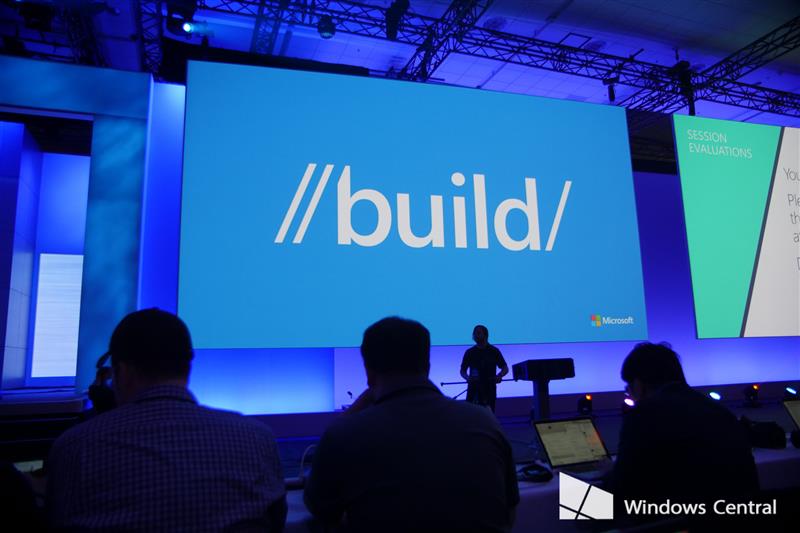
Starting on Wednesday, March 30 and running through Friday, April 1 Microsoft is throwing their annual conference for developers in San Francisco. Windows Central will, of course, be on the ground with me, Mark and even Abhishek this time around.
Are you new to Microsoft and Windows? Not sure what Build is or why it is important? Moreover, what can (and can't) you expect this year?
Here is our full prelude to Microsoft Build 2016.
What it is
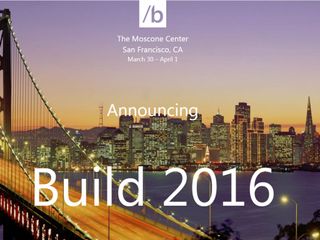
Every year, Microsoft holds a three-day conference for developers where the company reveals upcoming changes to Windows, Azure, and their development platforms.
Microsoft Build is overwhelmingly geared towards professional developers and not consumers. That is not to say regular people won't find value in the announcements – far from it – but the majority of the information detailed relates to programming, APIs, developer tools, upcoming changes, and more nitty-gritty computational news.
The three-day event is very straightforward:
Day 1 Keynote
Day 1 starts off with a long keynote with various Microsoft executives, guests, and Microsoft's CEO, Satya Nadella. This keynote focuses mostly on Windows including new features and new tools for developers. Here is where you will learn what is coming next in Windows 10 for desktop, mobile, Windows 10 on Xbox, HoloLens, and the Internet of Things (IoT).
Get the Windows Central Newsletter
All the latest news, reviews, and guides for Windows and Xbox diehards.
Also, new information about various Microsoft services like OneDrive, Bing, Office, AI, and cloud computing are often discussed as well.
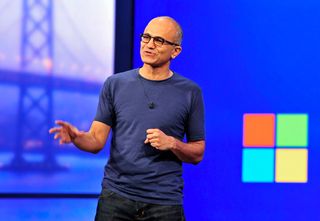
The Day 1 keynote is where most of the huge news and announcements happen, and it is the 'must' watch event at Build.
Day 2 Keynote
Day 2 also has a keynote that is more focused on Azure and cloud computing. It tends to be less exciting for non-developers, but the news revealed is often at the heart of Microsoft's core business for enterprise, servers, and the whole 'cloud first' mantra.
Day 2's keynote for non-developers tends to be a bit drab, so feel free to skip watching it.
In between those keynotes are a few hundred 'sessions'. Sessions are 30-minute classes that developers attend to 'deep dive' into some already existing features as well as what was announced during the keynotes. It is a fantastic opportunity for a developer to talk directly to the people who make the APIs, dev tools, software, and guidance for making apps and games for Windows 10, Windows 10 Mobile, and related technologies.
Also, members of the media get to participate in various 'breakout sessions' where we meet with executives, developers, get demos and learn more about what was announced.
On Day 3 things slow down a bit as all the major announcements have been made. Instead, more developer sessions are scheduled and end in the early afternoon as people start to head home to enjoy the weekend.
What it is not
Last October, Microsoft hosted a massive launch event in New York City. There the company announced and launched the Surface Pro 4, Surface Book, Band 2, Lumia 550, 950/XL, and showed more of HoloLens.
That is not happening here. In fact, there is no reason to presume any Microsoft hardware announcements for the rest of 2016 as Microsoft is reportedly preparing their 'next wave' of Windows 10 devices for early 2017 putting them on an 18-month cycle instead of a 12-month one*.
- The one exception here that we can think of would be a new Surface 4 announcement. No details on when and if that will happen, but it could be a surprise announcement at Build or at another time.
What to anticipate
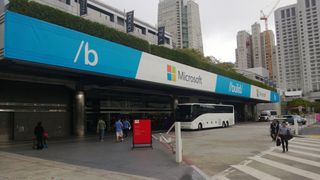
With all of that out of the way, we can now ask what Microsoft will likely talk about at Build 2016. Here are the most important points that many of us feel will be highlighted:
- Vision – Build is where Microsoft lays out its long-term plans for Windows, Azure, and all its major software services. Expect some broad proclamations about where the company is heading in 2016 and beyond.
- Stats – Microsoft will undoubtedly announce that Windows 10 is now past the 200 million install mark. Also, expect some information about Windows 10 app adoptions, Store metrics, payouts, and the increasing success of Azure.
- Hardware featurette (Partners) – Microsoft will likely feature some already announced PCs, phones, and devices running Windows 10
- Windows 10 Redstone – New features, timeline, and APIs for developers including demonstrations of some new abilities like SMS messaging on the desktop
- Something 'awesome': - Microsoft has already teased two new Live Tile features as well as "something awesome". What will it be? We'll have to wait to find out.
- Windows 10 Mobile - Any news about the phone version of Windows 10 will likely tie into upcoming Redstone features, and we'll probably hear more about the HP Elite x3 and other partners for hardware.
- New UWP Apps: - We've already seen the new universal Skype and OneDrive apps. Expect more on those and possibly some others not yet announced. Also, expect the new Starbucks app for Windows Phone to be detailed and demonstrated.
- Edge - Extensions were recently released on the Windows 10 Fast Insider ring. Expect more news about that as well as new features coming to the Microsoft Edge web browser in 2016.
- Cortana advancements – More on this below
- Xbox One and Windows 10 – Developing apps using the UWP for the Xbox One including information about when the Windows Store launches on the gaming platform. Sources close to us suggest that all apps that target Windows.universal will automatically be included in the Windows Store on Xbox One, quickly driving up the numbers for 'Xbox One apps.' Developers will need to opt-out if they do not want their app on the Xbox One Windows Store.
- Bridges update – More news on Project Centennial, which lets developers port their classic Win32 apps to the Windows 10 Store including games. Hopefully more news on Project Islandwood for porting iOS apps including progress in getting that Bridge up to date with iOS 9.x
- HoloLens - The Microsoft HoloLens is already shipping to developers to start developing for their holographic computing platform. Expect progress updates, demos, and maybe more partnerships.
- Xamarin – What are Microsoft's plans for the company and its developer tools. Information about pricing reductions and expansion? Read our primer on why Xamarin is a big deal for Microsoft.
Mystery items that Microsoft has yet to talk about? Microsoft NFC Payments and a solution for Windows in the car.
Cortana gets automated? (Rumor)
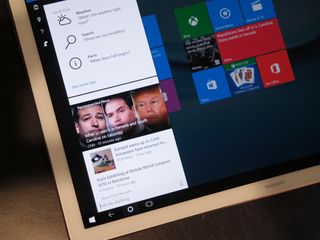
Sources close to Windows Central have heard that Cortana automation is coming at Build for developers to use in their apps.
A close analogy would be a Cortana If-this-than-that (IFTTT) system where developers can trigger events based on conditions for example time, calendar appointments, geolocation, and anything else that Cortana can track.
At first, we are told that when Cortana detects a condition or context to trigger the assistant will prompt the user to navigate into an app. Later, Cortana will be able to take actions on behalf of the user without interaction e.g. texting a person when you leave a location automatically.
We are also told the feature will be platform agnostic so that developers can use these Cortana features on Android and eventually iOS too.
Long-term, such a feature could be combined with various home automation technologies e.g. Nexia (see my review) so that when a user arrives (or leaves) Cortana can trigger the lights, camera or something else tied to the network.
Cortana is also supposed to come to the Xbox One in 2016 as well making an IFTTT-like app service very intriguing for the home.
If our report is accurate, Microsoft will reveal more at Build including making the tools available for developers. A lot can change, however, so we'll have to wait and see what happens.
Will the keynotes be streamed?
Yes! Microsoft always streams the keynotes. The Day 1 keynote starts at 8:30 AM PST (11:30 am ET / 3:30 pm GST / 9 pm IST) and is expected to run around 2.5 hours. Click here to see what time it starts in your part of the world.
You can already find our 'placeholder' page for the live stream (which we'll embed), our live blog, and your live chat room where you can discuss the announcement as they happen. Go here for that: www.windowscentral.com/build-2016-day-1-live.
What happens after the keynotes?
Expect our newsroom crew to cover announcements back home while our ground team is attending Build developer sessions and writing up reports during the day.
During the sessions, there are plenty bits of information that tend to come out including smaller details that were left out of the keynotes.
Some vocabulary
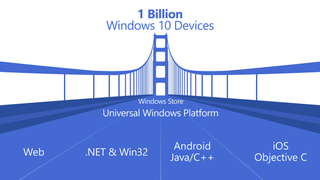
Unfamiliar with some of the terms being used? Brush up on these as you will be hearing a lot about them this week!
- UWP – Universal Windows Platform (UWP) aka Microsoft's build once, deploy everywhere software paradigm
- UWA – Universal Windows Apps (UWA), which is what apps for Windows 10, mobile, HoloLens, Xbox One, etc. are called
- SDK - Software Development Kit (SDK) are all the tools, APIs, software, and guidance that developers need to make apps.
- API - Application Programming Interfaces (API) are super important to developers. They are the programming keys that let them build out features into their apps. Want to add Cortana to your app? Microsoft needs an API for that. Interactive Live Tiles? Microsoft needs to make that feature and then provide an API so that developers can use them. Look for new APIs and improvements over old ones to be a big part of this event. Basically, the more APIs, and the more open they are, the more developers can do with apps.
- IoT - The Internet of Things (IoT) are small devices that connect to the cloud through a wireless connection but do not have a user-interface (UI). Everything from home automation, wearables, and mini-computers are part of the IoT world, and it is considered the next big thing.
- Bridges - Bridges are what Microsoft refers to programming tools that let developers port apps from iOS (Project Islandwood), Win32 (Project Centennial), and web apps (Project Westminster) to Windows 10 and Mobile. Also, there is now Xamarin, which acts as a bridge in the other direction letting developers write apps in C# for other platforms.
- Visual Studio - Microsoft Visual Studio is an integrated development environment (IDE) that lets developers make apps for Windows, the web, and more using Microsoft's various developer platforms.
Where to find all our coverage
If you are feeling overwhelmed or just do not want to miss any of our coverage of Build, just lock in our Build Hub. There you will find just the news related to that event all in one place!
Microsoft Build 2016 Hub
And don't forget to jump into our forums to discuss all the news announced:
Finally, you can also follow Mark, Abhishek, and me on Twitter and Instagram for a more personal view of the event.
- Daniel Rubino: @Daniel_Rubino, Instagram.com/Daniel_Rubino
- Mark Guim: @MarkGuim, Instagram.com/MarkGuim
- Abhishek Baxi @baxiabhishek, Instagram.com/baxiabhishek
Apps
If you are running iOS, Android or Windows 10 or Mobile make sure you grab the official Build apps with full schedules and planning!
Download Build 2016 for Windows 10
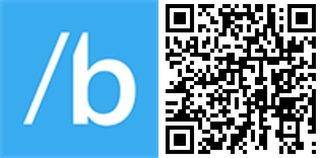

Daniel Rubino is the Editor-in-chief of Windows Central. He is also the head reviewer, podcast co-host, and analyst. He has been covering Microsoft since 2007 when this site was called WMExperts (and later Windows Phone Central). His interests include Windows, laptops, next-gen computing, and wearable tech. He has reviewed laptops for over 10 years and is particularly fond of 2-in-1 convertibles, Arm64 processors, new form factors, and thin-and-light PCs. Before all this tech stuff, he worked on a Ph.D. in linguistics, performed polysomnographs in NYC, and was a motion-picture operator for 17 years.